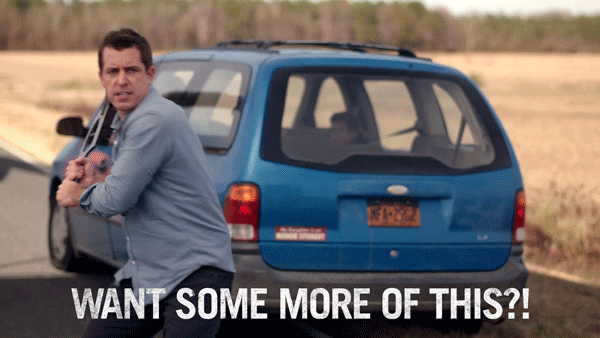It is an open debate currently, whether it is wise:
- to widen the clientele for prosthetic arms or to start mobilizing non-users or dropped out users of prosthetic arms, and
- to get more crappy “bionic” arms funded publicly.
The answer is, to both, …..
….no.
Facts are that due to both manufacturer and inherent problems, myoelectric “bionic” hands are both too expensive and functionally inferior; solving existing problems will not be possible at all for some of the technical issues. Conversely, arm amputees can be very functional without prosthetic arm on, and body powered arms are a modern technology with great materials that do provide great support.
People forget that many repairs of a prosthetic arm (such as the i-Limb) also personally may affect me as user: I have to drive the device to the repair shop, talk and explain, wait and so on, pay for the trip and parking, and take off work. And that, quite honestly, can just become enough. One becomes totally fed up with having to spend so much time at a prosthetic arm repair shop.
To have a crappy device that has frequent break downs is not in anyone’s interest that has a real job, and the ones without job often may just not need the most expensive prosthesis.
Of course, people that want a prosthetic arm, and that need one and are ready to commit to solving the long problem list associated with this path, should be supported in that in every way.
But the people that currently wear no prosthetic arm, or “just” a body powered or passive arm, should not be urged to wear one, or, particularly, a crappy “bionic” gadget arm.
Particularly also if you – as researcher or as prosthetic part provider – can not deal with valid criticism at its current level extremely productively already. The sloppier your work, the harsher the criticism, and it does take a real human attitude to accept criticism from an amputee – often, non disabled people talk to us from top down and expect nothing but gratitude.
That is the assumed default: you not being able to really handle criticism well – as researcher, as prosthetic technician, as prosthetic manufacturer.
And that is perfectly fine, we all have our personal limits. But I am a user of prosthetic arm devices, and if we do testing and critical appraisal for better development we give that a serious go.
I do not know of many prosthetic technicians, manufacturers or researchers that take even valid criticism productively.
From that view, a user or client or patient, that is not overly compliant and lovingly accepting of a less than mediocre product is a bad user, client or patient.
One that even has “better” ideas may be viewed as even worse. And that, in itself, seriously limits the amount of fun that can be had by troubleshooting prosthetic devices into submission.
While that is not a criticism, it is a clear fact, or limitation, that we should watch carefully and accept.
We can thus safely describe a few extremely relevant reasons, why intelligent and empathic people may stay away from the prosthetic arm circus. Not as a sign of weakness or lack of support, but as an intelligent educated decision.
If you lack a capability, such as being sufficiently empathic with amputees (that, also, may suffer from severe phantom pains, like, eternally), then it may be totally safe to admit that you are overwhelmed and unable to cope with that, and it is totally safe to take your fingers off that subject and nudge out.
Bearing that type of suffering may not be easy. It may cause you to stop listening and being a good human friend.

Also, after a full day, an arm stump that was in a prosthetic arm usually stinks a bit, and one that has blisters or other skin damage may smell even more.
If you want to see a lot more patients than you see now for your sales of prosthetic arms, or research test rabbit recruiting, then you look at getting a lot more of these with real problems, as these were also among the ones that have not been wearing prosthetic arms now.
So if you are not after raising that particular type of hell, safe to stay put! Really.
To put it the other way around: the current situation with some 70% of arm amputees not wearing a prosthetic arm will in all likelihood be a direct reflection of an already completed optimization process.
The ones that peacefully say no to prosthetic arms? Chill, y’all. Our community is quite heterogeneous; the ones that wear these arms are possibly rather different people from the ones that do not. You do NOT want to awaken them to come back to disturb you. I have become almost one of them, and calling these people out may very well be a bad choice, for your own sake. Because their and all of our current situations usually came about for very specific reasons.
So let us look at the apparent mismatch here.
The current clients of prosthetic technicians and thus users of prosthetic arms:
- deal with the many difficulties of getting a prosthetic arm fitted; while this process often is very cumbersome and lengthy, it may just result in a mediocre fit. This can have many reasons, one of them a daily variation in stump shape and size, another in the inability of the prosthetic technician to get the socket shape right;
- successfully negotiate with, and tolerate, prosthetic technicians doing what they are doing, from creating a cast of the stump to messing with the components of the prosthetic arm;
- successfully accept the components that are put on the prosthetic arm and manage to work with these;
- successfully manage the usually questionable appearance (or also noise, in case of a “gadget” arm) of the prosthetic limb;
- successfully manage all work, tasks, manipulations, activities and duties they need to do *with* the prosthetic arm on;
- successfully work with the many flaws and problems these prosthetic arms contain;
- gladly work with the medical side effects of prosthetic arms (rashes, blisters, ingrown hairs, etc.);
- are happy to pay time, effort, emotions, attention and expenses for the many repairs, fixes, upkeep and re-dos these prosthetic arms require.
Usually, people that do not use, or stopped using, prosthetic arms:
- are not in a position to deal with getting an arm fitted, which indeed is also expensive, boring, possibly a bit uncomfortable or outright painful (like, when a hard socket is too narrow, or a custom liner is too narrow);
- do not gladly bear the ways and nature of prosthetic technicians doing what they are doing;
- do not happily accept the components that are put on a prosthetic arm and that view – I can tell you for free – has a lot going for it, because many prosthetic arm components, even compared to normal everday hardware bought at any hardware store – are outright crappy, produced sloppily, and insanely overpriced;
- do not see why they should wear a strange looking prosthetic arm when a possibly also questionably looking arm stump at least does not look worse but causes so much less trouble;
- successfully manage all work, tasks, manipulations, activities and duties they need to do *without* the prosthetic arm on;
- are not happy with medical side effects of prosthetic arms and
- do not need to invest time, efforts, emotions or money into prosthetic arms of questionable use.
So with significantly widening the circle or arm amputee clients that you wish to impose more prosthetic arms on you risk to get, increasingly, the less compliant ones, the ones that damage your product even faster and less carefully than anyone has ever done before.
Negotiating your defeat versus a failing product will not likely become easier with increasing users.
The problem in negotiating or relating these aforementioned topics, relevant points or issues are the following:
- Fitting a prosthetic arm is in fact a problematic step in that some people are sensitive about this. If you cannot productively deal with that, you miss a relevant ingredient here. Many arm amputees have sufficient personal experience and do not need people to coerce them into anything;
- Dealing with insurances and dealing with prosthetic technicians can be difficult or weird. The problems are often interpersonal. I heard stories about some prosthetic technicians that make one’s hair stand straight up, and, I experienced extremely weird stuff myself. Depending on who you have around your corner, not wearing a prosthetic arm can be the best option, really. There are people you do not want to ever do business about your arm stump with, believe me.
- Prosthetic arm components can be extremely crappy (e.g.: link, link, link, link). I irreversibly damaged a “modern” Otto Bock wrist unit (5 seconds), hand (a few minutes), cable setup entirely degloved and torn down (a few minutes) and wrist (a few weeks) as well as hooks (a few months); I had congestion eczema due to an Ossur liner, and there are Touch Bionics hand issues to this day, where a non-responsive or even aggressive customer service is so bad that not at all wearing the product or even buying it is a really, really, really great option;
- Prosthetic arm appearances can easily be seen as utter crap, from view point of hiding the handicap well, point blank. No one ever follows the appearance test mantra that I put out, so you cannot be surprised if nothing useful comes out, at any time, ever. Modern design considerations and the Uncanny Valley (link, link), may play a role, too.
- Particularly with missing one (not two) hands and a rather long residual limb, a prosthetic device may not massively expand your range of activities. So depending on what you want to do, weighing negatives against positives very easily may point to “no prosthetic arm” as very rational and correct choice. There are even Activities of No Particular Prosthetic Need (ANPPN). Anyone saying any different necessarily will be irrational or not properly weighing realities here.
- Medical negative side effects of prosthetic arms can rapidly be very uncomfortable; I can get myself blisters in less than a day if I put my mind to it. Every person and their arms are different.
- It is a lot cheaper for insurances and my own wallet if I do not wear my prosthetic arms, or, if I do not wear them that often: a day not worn is a day it stays not used down, not worn down, not damaged. I started with having to go for a 2-hour repair every 4 days, per month that would cost me 20 x 2.7 = 54 CHF just in driving and parking expenses, which would be around 650 CHF a year, not mentioning the total of annual “two work weeks” that I would sit there waiting. Anything reducing that is good work, and that (in my case) involved both developing new parts and wearing it less.
If you want to “solve” these often times difficult to accept (for the sales industries) evaluations of intelligent, empathic arm amputees that very responsibly come to well considered answers regarding their own prosthetic arms, then you have to be very, very, very good. If you are that good, though, question is why wouldn’t you much rather solve more relevant and pressing problems?
Generally, with a prosthetic arm, less can be a lot more, to the point where “no prosthetic arm” is the right amount of “less”. Not without reason. The only people that never understood that are, mostly, researchers and sometimes the industry. Some still keep happily adding features to their research arms.
Real people may have a prosthetic hook ready for the rough bits or hard bimanual work, or to balance out asymmetry, but otherwise, just leave it at that. \
I also find that this is the best result of a contemporary well educated expense/trouble-advantage/gain function (e.g., link, ..). There are really enough other problems to deal with.













